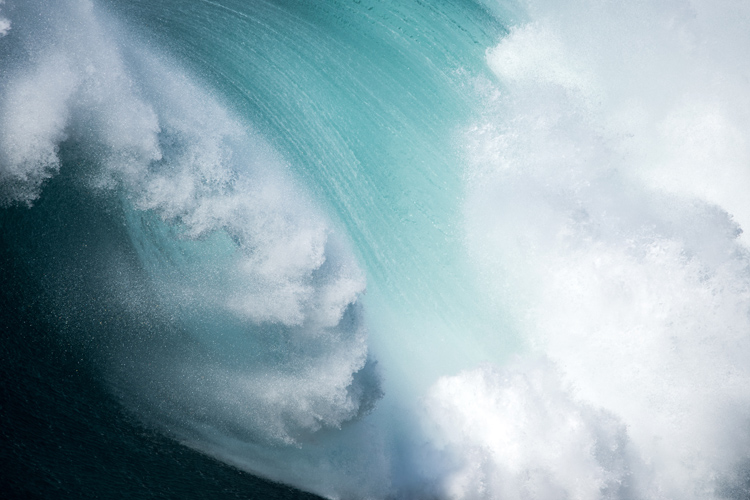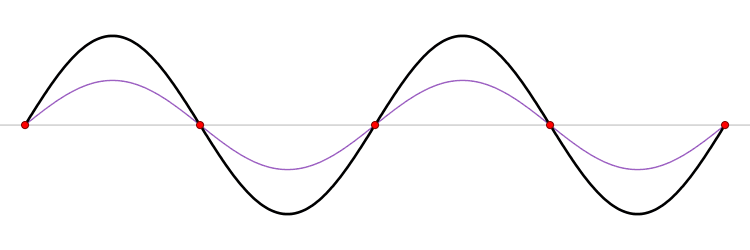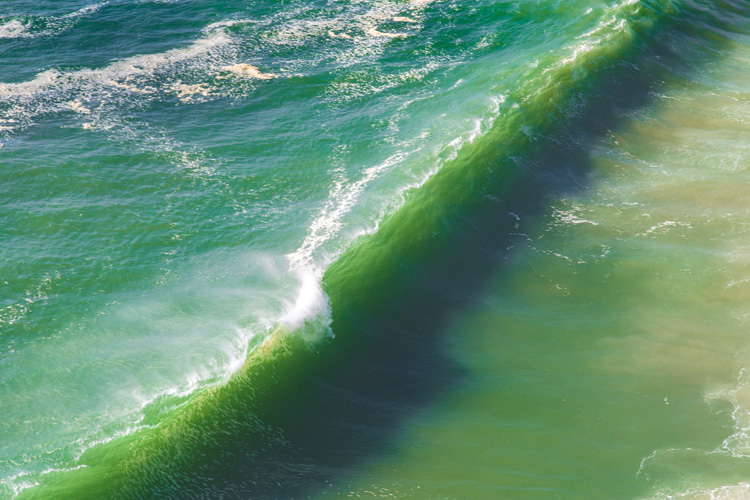Waves are a mysterious phenomenon that surrounds us more than we imagine. Here are a few things you probably didn't know about waves.
Waves appear in many forms and shapes. They have their own properties and behave differently from each other.
The creation of waves and swells is a fascinating and complex process that has long captured the imagination of scientists, surfers, and beachgoers alike.
Whether crashing onto the shore or gently rolling through the open ocean, waves are a ubiquitous and powerful force of nature that shapes and influences the Earth's landscapes and ecosystems.
But where do waves come from, and what drives their movement and behavior? Here are 22 curious facts about the magical power of waves:
1. From a scientific perspective, waves can be categorized based on the direction of movement (longitudinal waves, transverse waves, and surface waves) or based on the (in)ability to transmit energy (electromagnetic waves and mechanical waves);
2. Waves are everywhere: they are a part of our daily lives, in and out of the water. Sound is a type of wave that travels through the air;
3. Waves, or more precisely microwaves, can also help cook your food. A microwave is a form of radiation with wavelengths ranging from one meter to one millimeter;
4. Waves do not transport matter - they transport energy over thousands of miles. And that's why surfers can ride ocean ripples;
5. The largest wave ever recorded by humans measured 1,720 feet. It was triggered by an earthquake that hit Alaska's Lituya Bay on July 9, 1958. It was the result of an earthquake that hit Alaska's Lituya Bay on July 9, 1958. Two occupants of a small fishing boat surfed that wave and survived to tell the story;
6. Most waves we see coming in from the horizon are a product of wind blowing over large ocean areas;
7. Length, height, period, and speed are the main characteristics of a typical sea wave;

8. There are four main types of breaking waves: spilling waves, plunging waves, collapsing waves, and surging waves;
9. A wave breaks when it enters shallow waters, and the bottom of the wave slows down. The moment the wave reaches a depth that is 1.3 times the wave height, the top part of the wave collapses;
10. Overall, wave heights in the Northern Hemisphere vary more throughout the year than in the Southern Hemisphere. As a result, surfers get small waves during summer and powerful groundswells in winter;
11. Ocean waves can be affected by the shape and topography of the seafloor, which can cause them to refract, diffract, or focus;
12. A seiche is a standing or stationary wave that sways back and forth in a closed or partially constrained body of water - a lake, a swimming pool, and a harbor or a billabong. Here's how it behaves:

13. In deep water, a floating object traces an orbital path as a wave passes through, ending up in more or less the same place. In shallow water, that same object will move slightly forward in a motion called "Stokes drift";
14. In the Southern Hemisphere, there is less difference in wave height between the warm and cold seasons, resulting in more consistent surfing conditions throughout the year;
15. The Agulhas Current, off the coast of Durban, in South Africa, produces some of the biggest waves in the world. In this busy shipping area, waves can easily reach over 100 feet (30 meters) in height;
16. The typical length of tsunami waves is about 100 times the depth;
17. As a result, the travel speed of a wave in the ocean with an average depth of approximately 13,200 feet (4,000 meters) is around 440 miles per hour (700 kilometers per hour), which means the speed of a jet plane;
18. Ocean waves can interact with each other and form more complex patterns, such as constructive and destructive interference;
19. The idea of turning wave energy into electricity occurred in 1799 when Girard & Son patented a mechanism to drive wave power to activate pumps, mills, saws, and heavy machinery;
20. In theory, the wave energy potential of the United States is estimated to be 2.64 trillion kWh, which means around 64 percent of all the electricity generated in the country in 2021;
21. Ocean waves help regulate global temperatures by transferring heat from the equator to the poles;
22. The world's first wave power farm was installed in Portugal;
